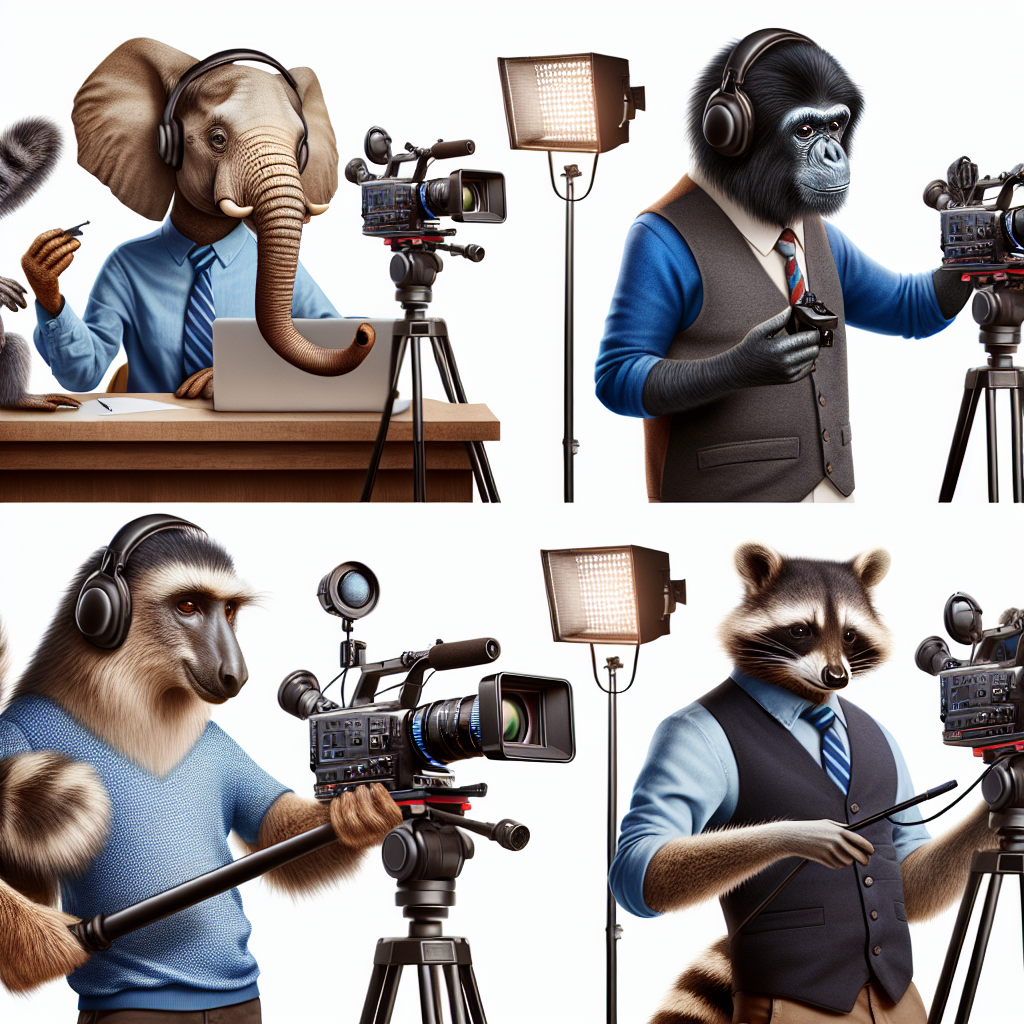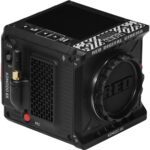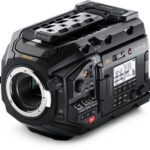
Creating captivating animal videos isn’t just about pressing the record button when you see something cute or interesting in the wild. It’s an art form that requires the right tools, techniques, and a whole lot of patience. Whether you’re a budding wildlife documentarian or a pet owner looking to showcase your furry friend’s antics, these tips will help you capture the essence of your animal subjects and produce videos that truly stand out.
Key Takeaways
- Choose the right equipment for clarity and stability in your animal videos.
- Learn about your animal subjects and their behavior for more engaging footage.
- Develop patience and adapt to the unpredictable nature of animal video production.
- Understand the importance of composition and the right angles to tell a story.
- Use high-quality audio to complement your visuals and enhance the viewing experience.
Choosing the Right Equipment
First things first, let’s talk gear. You don’t need the most expensive camera on the market, but you do need the right one for the job. Consider these factors:
- Camera: Look for something with high resolution and good low-light performance. A camera with a zoom feature is also a plus when you can’t get too close to your subjects.
- Stabilization: A shaky video can ruin even the most beautiful scenes. Use a tripod or gimbal to keep your shots steady.
- Lens: A variety of lenses can help you capture different perspectives. A telephoto lens is especially useful for wildlife as it allows you to zoom in from a distance.
- Weatherproofing: Nature is unpredictable. Weatherproof equipment will save your shoot on a rainy day.
With the right equipment, you’re ready to dive into the wild or your backyard to start capturing stunning animal footage.
Getting to Know Your Animal Subjects
Before you even start filming, take the time to observe your subjects. Understanding animal behavior is crucial for predicting their next move and being ready to capture it on camera. Here are some ways to do this:
- Research the species you’re filming to learn about their habits and routines.
- Observe your subjects from a distance to minimize disturbance and capture natural behavior.
- Be patient and avoid making sudden movements that might startle the animals.
Remember, the more you know about the animals you’re filming, the better your chances of getting that perfect shot.
Mastering the Art of Patience in the Field
Patience is perhaps the most important skill in animal video production. Animals won’t perform on cue, so be prepared to wait. Sometimes, the waiting is the part where you learn the most about your subject’s behavior, which in turn helps you anticipate their actions and get better footage. Keep these points in mind:
- Arrive early and get set up before the animals become active.
- Be prepared to wait for long periods. Bring snacks, water, and comfortable clothing.
- Stay alert and ready to film at all times – you never know when a great opportunity will arise.
Embrace the waiting game as part of the experience. Those who wait are often rewarded with the most breathtaking moments on camera.
When you’re out in the field, the angle of your camera can dramatically change the story you’re telling. Shooting from a low angle can make even the smallest critter look grand and formidable, while a high angle might give viewers a broader understanding of the environment and the animal’s place within it. Get creative and try different angles to see what works best for the story you’re aiming to tell.
Angling for Impact: High and Low Shots
Imagine you’re filming a squirrel. A low shot from the base of the tree gives the viewer a sense of what the world looks like from the squirrel’s perspective, making it appear larger than life. On the other hand, a high shot can show the squirrel’s agility as it leaps from branch to branch. Both angles offer unique insights into the animal’s world, and it’s your job to choose the one that best fits your narrative.
The Role of Light: Best Times for Shooting
Lighting is everything in video production. The golden hours—shortly after sunrise and before sunset—offer the best natural light for a warm, glowing effect. But don’t shy away from other times of the day. Overcast skies provide diffused light that can reduce harsh shadows and highlight the natural colors of your animal subjects.
Also, remember that the direction of light matters. Front lighting can illuminate your subject clearly, while backlighting can create a dramatic silhouette. Side lighting can enhance textures and depth. Use these variations to add emotional impact to your scenes.
The Patience Game: Timing Your Shoots and Animal Interactions
Timing is critical in animal video production. You might have to wait hours for an animal to appear or for the perfect light. But it’s worth it when you capture that magical moment. It’s not just about the animal showing up; it’s about capturing them doing something interesting, something that tells a story or reveals their character.
Understanding Animal Timings and Habits
To make the most of your time in the field, study the patterns and behaviors of the animals you’re filming. Birds might be more active in the morning, while nocturnal creatures come to life at dusk. Knowing these patterns helps you plan your shoot and increases your chances of capturing compelling footage.
Minimizing Human Interaction for Natural Behavior
The less you interfere, the more natural your footage will be. Move slowly and quietly, use a long lens to keep your distance, and avoid sudden movements. The goal is to be a fly on the wall, observing without altering the scene.
Now, let’s talk about the waiting. It’s not wasted time. It’s an opportunity to become attuned to the environment and the rhythms of nature. Sometimes the anticipation is as thrilling as the filming itself. And when that moment arrives, it feels like the world has given you a gift, and it’s your privilege to share it with others.
- Bring a book or something to pass the time without distracting you from your surroundings.
- Keep your camera on and ready to go—you might only get a few seconds’ notice before a scene unfolds.
- Use remote triggers or motion sensors for especially elusive creatures.
Waiting for the Perfect Moment: Tips on Endurance
Staying focused and alert during long periods of inactivity is a skill that you’ll develop over time. Keep your mind on the end goal: that perfect shot. And remember, the more time you spend with your subjects, the better you’ll understand them, and the better your footage will be.
The Cutting Room Floor: Editing for a Captivating Narrative
Once you’ve captured your footage, the real magic happens in the editing room. This is where you weave together the individual clips into a story that will captivate your audience. It’s not just about stringing together shots; it’s about crafting a narrative that feels seamless and engaging.
Finding the Story in Your Footage
Review your footage and look for a storyline. Maybe it’s the journey of a young animal finding its place in the world or the daily struggles of wildlife in a changing environment. Whatever it is, let the story guide your editing decisions.
Editing Techniques for Smooth Transitions
Transitions are the glue that holds your story together. Use them to guide your audience from one scene to the next. Cut on action to maintain a sense of movement, and match cuts to link similar shots. Remember, the best transitions are the ones that go unnoticed, smoothly moving the story along.
Enhancing Your Video with Sound and Music
Great visuals deserve great audio. Natural sounds add authenticity, while music can set the tone and pace of your video. When choosing music, consider the mood you want to convey. Is it playful, dramatic, or awe-inspiring? The right soundtrack can elevate your animal video from good to unforgettable.
Sharing with the World: Best Practices for Distribution
You’ve put in the work, and now it’s time to share your masterpiece with the world. But where do you start? The platform you choose can make a big difference in who sees your video and how it’s received.
Choosing the Right Platform for Your Animal Videos
Consider your audience and the style of your video. Platforms like YouTube are great for longer, more detailed videos, while social media sites like Instagram and TikTok cater to shorter, more digestible content. Think about where your video will shine and choose accordingly.
And that’s just the beginning. Stay tuned for more insights on how to make your animal videos truly stand out, including tips on SEO, captioning, and engaging with your audience.
Sharing with the World: Best Practices for Distribution
Once your animal video is polished and ready, it’s time to think about distribution. Sharing your work effectively is just as important as capturing and editing it. You want your video to reach the right eyes and make an impact.
Choosing the Right Platform for Your Animal Videos
There are numerous platforms where you can share your animal videos, and each has its own audience and style. YouTube is ideal for longer, narrative-driven videos, while Instagram and TikTok favor shorter, more visually-driven content. Facebook can be great for community sharing and reaching a diverse audience. Consider your video’s style, length, and the story you’re telling to choose the best platform for your work.
SEO and Captioning for Wider Reach
To ensure your video is seen by as many people as possible, you’ll want to optimize it for search engines. This means using relevant keywords in your title, description, and tags. Additionally, adding captions not only makes your content accessible to a wider audience, including those who are deaf or hard of hearing, but it also can contribute to better SEO.
- Research keywords related to your video’s content and include them naturally in your metadata.
- Use descriptive titles that give viewers an idea of what to expect while intriguing them enough to click.
- Add captions to your videos to improve accessibility and viewer engagement.
Remember, the more people can find and understand your video, the more successful it will be.
Engaging with Your Audience: Tips on Interaction
Once your video is out there, don’t just sit back and wait for views to roll in. Engage with your audience! Respond to comments, ask for feedback, and encourage viewers to share your video. Building a community around your content can lead to a more loyal and engaged audience, which in turn can help your videos gain even more traction.
FAQs
Got more questions? Here are some answers to common queries about animal video production:
How do I approach filming skittish or rare animals?
Approach filming skittish or rare animals with extra caution and respect. Use long lenses to keep a safe distance, and avoid making sudden movements or noises. It’s also important to understand and follow any legal regulations regarding wildlife filming to ensure the safety and wellbeing of the animals.
What’s the best way to maintain equipment in harsh environments?
To maintain your equipment in harsh environments, use protective cases and covers. Keep your gear clean, and always carry a maintenance kit with you. Be mindful of temperature changes, as condensation can damage sensitive electronics. When you’re not filming, store your equipment in a safe, dry place.
How can I create a video that stands out in a saturated market?
To create a video that stands out, focus on telling a unique story or showcasing a perspective that hasn’t been seen before. High-quality production, creative cinematography, and a strong narrative can help your video rise above the rest. Also, consider niche platforms or communities where your content can be more easily discovered by enthusiasts.
Can you recommend any post-production software for beginners?
For beginners, software like Adobe Premiere Rush or iMovie is user-friendly and provides the basic tools needed for editing. As you become more experienced, you can move on to more advanced software like Adobe Premiere Pro or Final Cut Pro X, which offer a wider range of features and greater control over your edits.
Is it necessary to have formal training in wildlife videography?
Formal training can be helpful, but it’s not strictly necessary to create engaging animal videos. Many successful wildlife videographers are self-taught, learning through experience, online resources, and practice. What’s most important is a passion for animals, a willingness to learn, and a commitment to respecting wildlife and their habitats.





